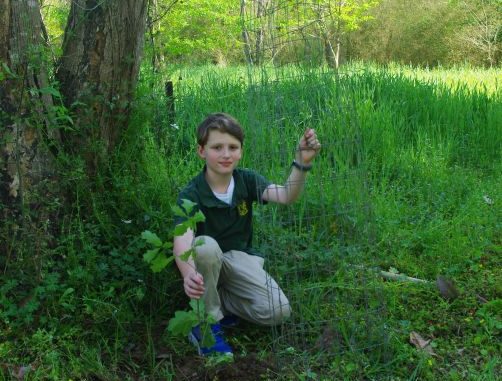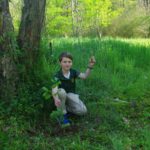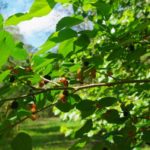
It is time to get ready for the 2017-18 hunting season
The madness that happens during the month of March began when the soothsayer told Caesar to beware the Ides of March. Julius did not listen and paid the price for ignoring it. Then, someone canned the saying that March comes in like a lion and goes out like a lamb. The opening day of the 2017 turkey season was just the reverse of this as a storm front crossed the state bringing rain right at daylight in southeast Louisiana (very much maddening to turkey hunters).
March Madness was equally maddening to those who follow college basketball, the Final Four, and the art of bracketology. I did get North Carolina right. And last but not least it was a maddening sight as hundreds of sportsmen crowded the aisles at the Big Buck Contest during the Louisiana Sportsman Show, gawking at the entrees of trophy and quality bucks, asking questions like, “are these all out-of-state deer?” or making comments like, “the buck I killed was bigger than these.” It is very much maddening trying to score 100 deer in 1 ½ days but the official measurers were up to the task and the winners selected on schedule for the Sunday awards program. Check out the story in this issue of Louisiana Sportsman.
Right now the biologists at LDWF are looking at the harvest data from the 2016/17 season, generating reports, telling clubs and landowners what their deer herd looks like, surveying the habitat deer range, making recommendations for 2017 and conducting biological collections to further document herd conditions. If you did not collect harvest data then you really are not managing your deer herd. Deer harvest data is essential for sound deer management and those who do not collect data really have no idea as to what is going on within their deer population. Managing a deer herd without harvest data is like picking LSU to be in the Final Four. What is really maddening is establishing buck harvest criteria without harvest data. Information concerning growth and development within the various age classes is a must to develop a program that has a chance to succeed.
Over the next few months I will be discussing deer and turkey management issues in this column that hopefully will help you with your management program and perhaps get you away from the madness and on the road to success. The bottom line for any successful wildlife program is having productive habitat. This was quite evident at the Sportsman Show. In the Louisiana Gun Category, all of the top five deer were killed on river bottom habitat that has available agriculture and their scores were above 150. Then the scores dropped to 130 and lower as the deer from the less productive habitats were measured. While these bucks were mature bucks, 3-6 years old, the nutrition was simply not available to grow true trophy class antlers.
Consequently, the beginning step in establishing a productive deer program is to have a good understanding of herd growth and development and what the actual growth potential of the herd is. Growth potential of deer in a pine dominated forest is much less than deer living on a bottomland hardwood tract with adjacent farmland. A typical buck scoring 130 is probably a top end deer for pine dominated habitat while on the bottomland tract it is one that could be passed up and allowed to perhaps grow larger. However, if on that bottomland tract that buck is 6 ½ years old, it is in its prime and probably represents a low end buck for that age class and should be harvested. This is why data collection is so important and is a must in order to develop a program that works. Even on small tracts of land sound harvest data will help with the decision making process.
Last summer on our small tract in East Feliciana Parish I was getting photos of some bucks with three inch or less spikes and bucks with nice 6-8 inch spikes. Because of our habitat conditions, pine dominated forests all around us, I was thinking the small spikes were 1 ½-year-old bucks and the larger spikes were 2 ½-year-old bucks. One of the small spikes was hit on the highway and it was a 1 ½-year-old buck. However my son-in-law killed one of the larger spikes that weighed 110 pounds and it too was a 1 ½-year-old buck. Just this one buck gave me insight as to our growth and development, which is not great, but it is not as bad as I was thinking it might be.
Improvement of habitat conditions for wildlife is a must to have good game species populations. One habitat objective is to develop a good hardwood component in the forest that has both hard and soft mast species of trees. Oaks and pecans are very desirable, but so are the hardwoods that produce soft mast fruit such as red mulberry, black cherry, persimmons and the like. For squirrels, it is always good to have trees that produce what is referred to as light seeded mast such as elm and maple.
Tree planting should have already been done on the landscape. Planting trees in late spring or early summer can be a waste of time as the temperatures rise and rainfall declines, making conditions poor for tree survival. It is generally best to plant trees in late winter, giving time for the root system to become established which helps with tree survival. On our land we are dominated with water and willow oak and have a few pecans, but no white oak species. Consequently our game plan has been to plant more species of oaks and develop a diverse oak component. We have planted sawtooth oaks, cow oaks, obtusa oak, white oaks and a few overcup oaks in the wet sites. We have also planted some of the improved varieties of chestnuts along with mayhaw trees, pear trees, and plum trees.
Generally it is best and more economical to plant seedlings rather than container trees. Container trees planted in April may need to be watered if Mother Nature does not provide the water. Another thing to keep in mind is that deer love to eat freshly planted trees so some type of caging may be in order to prevent heavy browsing. Tree planting is a habitat project designed to improve habitat conditions over time. Once the tree begins producing fruit, you now have a source for seed and new trees over time so it is a project that will give back in several ways, food for wildlife and seed for the next forest.




